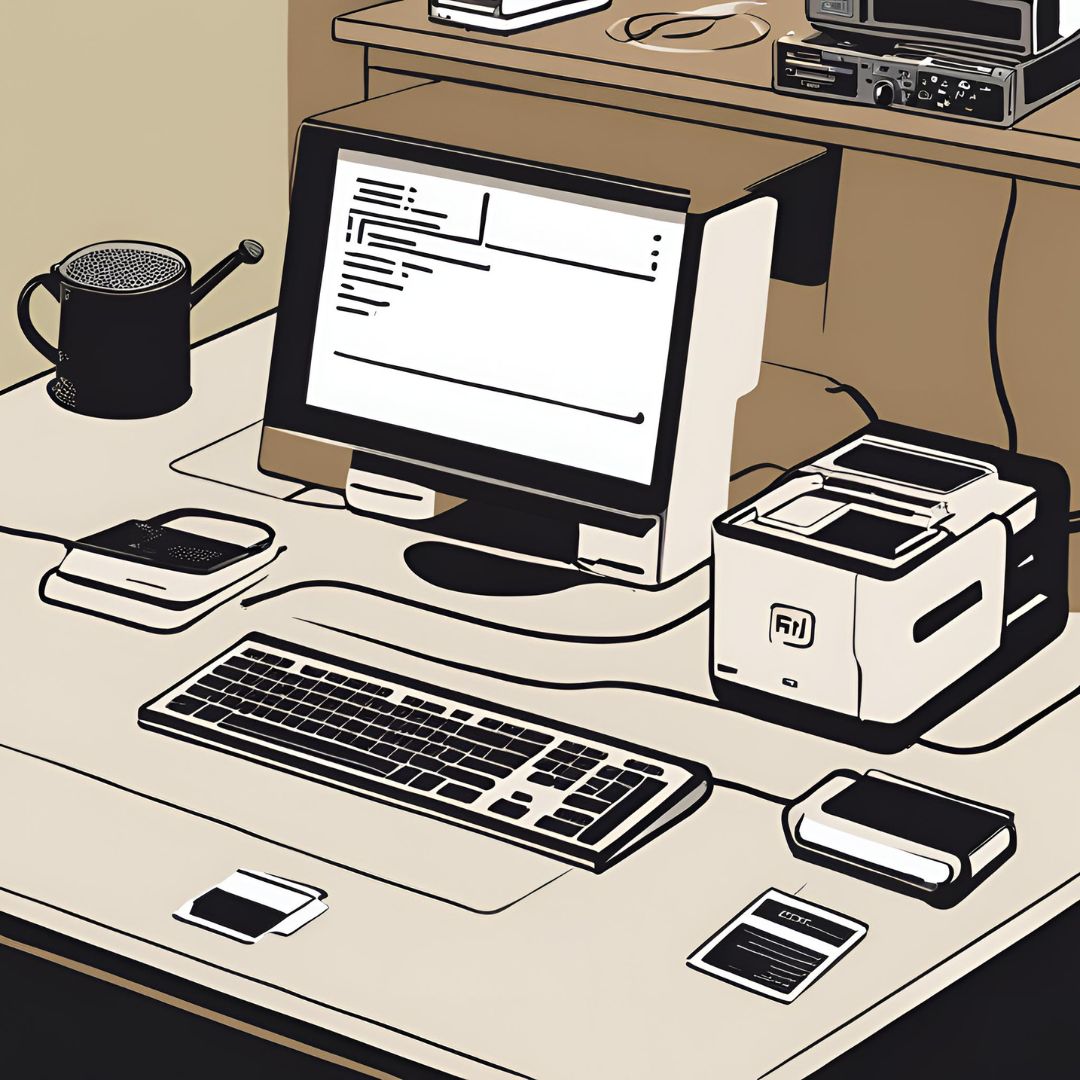
In today’s digital age, connecting a printer to your computer is a fundamental task, yet it can be a daunting experience for some. Whether you’ve just bought a new printer or are trying to reconnect an existing one, understanding the process is key to avoiding frustration. This guide will walk you through how to connect a printer to the computer, ensuring a smooth and efficient setup.
Why Connecting a Printer to a Computer Is Essential
Before diving into the steps, it’s important to understand why knowing how to connect a printer to a computer is crucial. With remote work becoming the norm and digital communication taking precedence, being able to print documents, photos, and other materials from your computer is more important than ever. Learning how to hook up a printer to a computer ensures that you can seamlessly integrate your hardware into your digital workflow.
Step 1: First unboxed your Printer then setup
The first step in learning how to connect printer to the computer is setting up your printer hardware. Begin by unboxing your printer and removing all packaging materials. Most printers come with a quick start guide, so it’s wise to keep that handy.
Load Paper: Place a stack of paper into the printer’s paper tray. Make sure the paper is aligned properly to avoid jams.
Place the Printer: Find a suitable spot for your printer, ensuring it’s close to your computer and a power outlet.
Connect Power: Plug the power cord into the printer and then into a power outlet. Press the power button to turn ON your Printer device.
Install Ink Cartridges: Open the printer’s cartridge compartment and carefully install the ink cartridges according to the manufacturer’s instructions.
Step 2: Connecting the Printer to the Computer
Now your Printer is setup in next step you need to connect with Printer. This can be done either via a USB cable or wirelessly, depending on your printer’s capabilities.
Connecting via USB Cable
Confirm Connection: Once the drivers are installed, your computer should recognize the printer. Confirm with a test printout that connection is successful.
Locate the USB Port: On the back of your printer, you’ll find a USB port. Plug one end of the USB cable into this port.
Connect to Computer: Plug the other end of the USB cable into an available USB port on your computer.
Install Drivers: Your computer should automatically detect the printer and begin installing the necessary drivers. If it doesn’t, you may need to install them manually using the CD that came with the printer or by downloading them from the manufacturer’s website.
Connecting Wirelessly
Wireless printing is convenient and eliminates the need for cables. Here’s how to connect printer and computer wirelessly:
- Access Printer’s Menu: Use the printer’s control panel to navigate to the wireless settings menu.
- Select Wi-Fi Network: Choose your Wi-Fi network from the list of available networks. Now enter your Wi-Fi password to proceed further.
- Install Drivers: As with a USB connection, your computer may automatically install the necessary drivers. In some cases you need manually install Printer drivers.
- Add Printer: On PC, open the “Devices and Printers” option then hit “Add a Printer.” After that Follow the prompts to add your wireless printer.
- Test the Connection: Print a test page to ensure that the wireless connection is working correctly.
Step 3: Troubleshooting Common Issues
Even after following the steps on how to hook up a printer to a computer, you may encounter issues. Here are list of some common issues and how to resolve them:
Printer Not Found
If your computer doesn’t recognize the printer, try the following:
- Check Connections: Check and confirm that all cables are connected securely.
- Restart Devices: Turn off both the printer and the computer, then turn them back on.
- Update Drivers: Visit the printer manufacturer’s website to download the latest drivers.
Printer Offline
A common issue when learning how to connect printer to the computer is the printer showing as offline:
· Verify Wi-Fi Connection: Double-check that your printer is linked to the appropriate Wi-Fi network.
· Reboot Your Router: Restarting your router can often fix connectivity problems.
· Designate as Default Printer: Ensure that your printer is selected as the default option in your computer’s printer settings.
Slow Printing
Your printer is printing slowly then, considers the following solutions:
Clear Print Queue: Sometimes, a backed-up print queue can cause delays. Delete all prints from the queue then and try printing again.
Reduce Print Quality: High-quality printing takes longer. Low down the print quality can speed up the process.
Check for Updates: Confirm that your printer’s firmware and software are up to date.
Step 4: Enhancing Your Printing Experience
Once you’ve mastered how to connect printer to the computer, you can explore additional features to enhance your printing experience.
Mobile Printing
Many modern printers allow you to print directly from your smartphone or tablet. Look for apps provided by your printer’s manufacturer, such as HP Smart or Canon PRINT, to enable mobile printing.
Cloud Printing
Cloud printing enables you to print from anywhere with an internet connection. Google Cloud Print is a popular service, but make sure your printer supports it.
Duplex Printing
If your printer supports duplex printing mode (double-sided) printing,then you can save paper and decrease waste. This is mainly useful for huge documents.
Conclusion
Knowing how to connect a printer to the computer is a valuable skill that enhances your ability to work efficiently in today’s tech-driven world. Whether you’re using a USB connection or going wireless, the process is straightforward and manageable. By following this guide, you’ll be well-equipped to hook up your printer to your computer, troubleshoot any issues, and make the most of your printing capabilities.
keep in mind, the key to achievement is patience and attention to detail. With this knowledge, you can confidently say you know how to connect printer and computer in a way that suits your needs. Happy printing!
